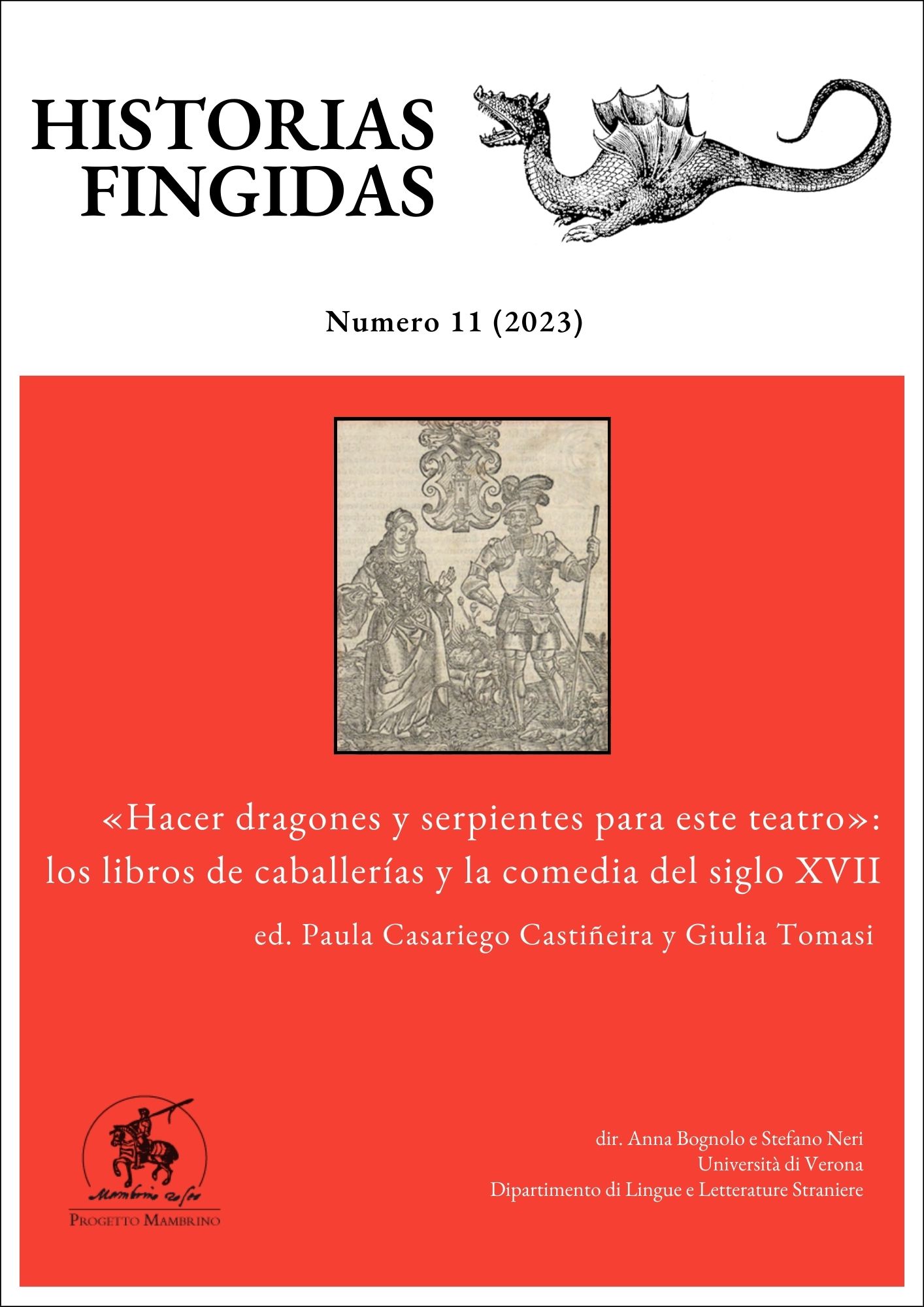Escenografía cortesana en las comedias caballerescas de Castillo Solórzano: «Los encantos de Bretaña» y «La torre de Florisbella»
DOI:
https://doi.org/10.13136/2284-2667/1397Palabras clave:
Alonso de Castillo Solórzano, teatro cortesano, siglo XVII, teatro de magia y de tema caballeresco, escenografía y efectos especialesResumen
En este trabajo analizo los recursos técnicos para la escenificación de las dos comedias caballerescas de Alonso de Castillo Solórzano, Los encantos de Bretaña y La torre de Florisbella, a la luz de los conocimientos reunidos hoy sobre la escenografía en los teatros comerciales; y especialmente en relación con el teatro cortesano barroco que se desarrolló alrededor de la corte real desde finales del siglo XVI y hasta los primeros años del reinado de Felipe IV. En este análisis se observa una clara relación literaria y escénica de los textos de Castillo con obras como La fábula de Perseo, de Lope, La gloria de Niquea, del conde de Villamediana, Querer por solo querer, de Antonio Hurtado de Mendoza, o La vitoria de España y Francia, de Alonso Jerónimo de Salas Barbadillo. El estudio también pone en evidencia la cercanía literaria y esc´énica de las dos piezas de Castillo, acaso por haber sido escritas para el mismo escenario y las mismas tramoyas, y ofrece más elementos para suponer que su labor de escritor teatral debió de darse solo en el contexto de fastos cortesanos, posiblemente como encargo de alguno de los señores en cuyas casas sirvió durante buena parte de su vida, sobre todo los marqueses de los Vélez.
Descargas
Publicado
Número
Sección
Licencia
Derechos de autor 2023 José Enrique López Martínez

Esta obra está bajo una licencia internacional Creative Commons Atribución-NoComercial 4.0.
Los autores/as que publiquen en esta revista aceptan las siguientes condiciones:- Los autores/as conservan los derechos de autor y ceden a la revista el derecho de la primera publicación, con el trabajo registrado con la Licencia de atribución de Creative Commons - No Comercial, que permite a terceros utilizar lo publicado siempre que mencionen la autoría del trabajo y a la primera publicación en esta revista con fines no comerciales.
- Los autores/as pueden realizar otros acuerdos contractuales independientes y adicionales para la distribución no exclusiva de la versión del artículo publicado en esta revista (p. ej., incluirlo en un repositorio institucional o publicarlo en un libro) siempre que indiquen claramente que el trabajo se publicó por primera vez en esta revista.
- Se permite y recomienda a los autores/as a publicar su trabajo en Internet (por ejemplo en páginas institucionales o personales) antes y durante el proceso de revisión y publicación, ya que puede conducir a intercambios productivos y a una mayor y más rápida difusión del trabajo publicado (vea The Effect of Open Access).

